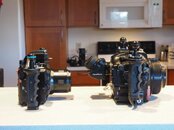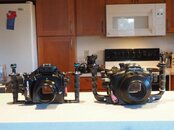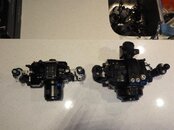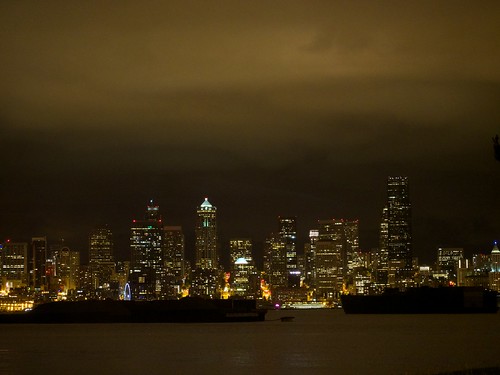decidedlyodd
Contributor
I've been shooting a Canon T2i/550D DSLR in a Nauticam housing for about 3 years now. When I bought it, it was one of the smallest (maybe the smallest) underwater DSLR setup at the time, but it's still sizable especially once the ports, strobes and arms are included.
In 2012 I bought an OMD EM5 as a smaller camera for when I didn't want to lug a bulkier DSLR and its lenses around with me. I've been happy with the size, performance and image quality for much of my day-to-day photography. When I really need the performance I'll use my 5D3, but the T2i has been relegated to purely underwater use at this point.
I'm now considering downsizing my underwater setup to an E-M5 or E-M1. I just don't see myself making the commitment in $$$ and size to house the full frame camera at this point. I mostly dive locally doing macro and occasionally CFWA. I take a big dive trip usually once a year with a smaller trip thrown in now and then.
What are the experiences out there for others who have gone from a DSLR to these newer generation M43 cameras? Are they that much smaller/lighter? Do you miss anything from the DSLR?
I managed to handle the Aquatica and Nauticam housings for the E-M1 and the Nauticam housing for the E-M5 at the Seattle Dive Expo a few weeks ago. They seem a bit smaller than my T2i housing, but it's hard to compare the total size once ports are included or to visualize how everything packs into a Pelican or to get a sense of bulk underwater.
In 2012 I bought an OMD EM5 as a smaller camera for when I didn't want to lug a bulkier DSLR and its lenses around with me. I've been happy with the size, performance and image quality for much of my day-to-day photography. When I really need the performance I'll use my 5D3, but the T2i has been relegated to purely underwater use at this point.
I'm now considering downsizing my underwater setup to an E-M5 or E-M1. I just don't see myself making the commitment in $$$ and size to house the full frame camera at this point. I mostly dive locally doing macro and occasionally CFWA. I take a big dive trip usually once a year with a smaller trip thrown in now and then.
What are the experiences out there for others who have gone from a DSLR to these newer generation M43 cameras? Are they that much smaller/lighter? Do you miss anything from the DSLR?
I managed to handle the Aquatica and Nauticam housings for the E-M1 and the Nauticam housing for the E-M5 at the Seattle Dive Expo a few weeks ago. They seem a bit smaller than my T2i housing, but it's hard to compare the total size once ports are included or to visualize how everything packs into a Pelican or to get a sense of bulk underwater.







 Plus, in the cruddy vis I wasn't able to find the Giant Pacific Octopus on eggs I was looking for anyways.
Plus, in the cruddy vis I wasn't able to find the Giant Pacific Octopus on eggs I was looking for anyways.

